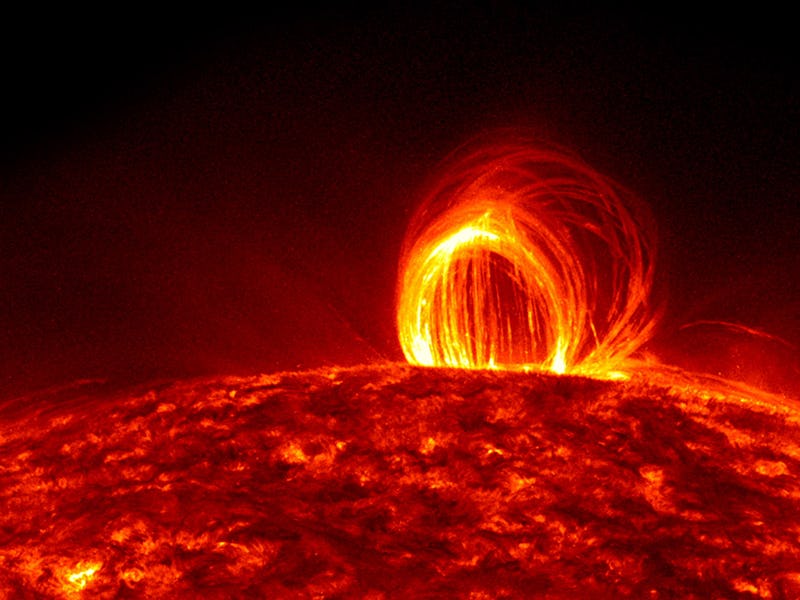A trio of satellites could take a groundbreaking 360-degree photo of the sun
We still don’t have a clear picture of the Sun’s physics — but the Solar Ring could change that.

The Sun is active, dynamic, and occasionally violent. Unfortunately, our view of the Sun is limited to a small handful of orbiting satellites and ground-based observatories. The Solar Ring is a new proposal that hopes to radically change that picture by launching a trio of satellites around the Sun to give continuous, 360-degree panoramic images in real time. The observatory could revolutionize our understanding of our parent star.
Despite being the closest star to us, we still lack an understanding of most of the physics of the Sun. While we understand the general picture — that the Sun is powered by fusion reactions, and the energy circulates its way to the surface and is released in the form of radiation — we don’t know the details. In particular, we do not understand mysteries like the origins of the 11-year sunspot cycle, the incredibly high temperature of the Sun’s corona, or how solar flares and coronal mass ejections take place.
Our information about the Sun is limited because we can only capture snapshots of it here and there with orbiting satellites and ground-based observatories. Oftentimes interesting activities start on the surface of the Sun facing away from any of our observatories, and by the time we catch it hours later, we don’t know how it started. And other times we can see a process begin to ramp up but then miss its full evolution as the Sun rotates away from our view.
Illuminating the Sun
NASA’s Solar Dynamics Observatory captured this image of a solar flare, an event that the Solar Ring could catch in its early stages.
To solve this a team of astronomers proposes the Solar Ring. The Solar Ring is a fleet of three spacecraft that will all orbit around the Sun. They will be separated from each other by 120 degrees and be fitted with identical instruments. This way their overlapping fields of view will make it impossible for us to miss anything happening on the surface.
Among the many kinds of observations that the astronomers behind the Solar Ring hope to perform, one involves a technique called reverberation mapping. By carefully mapping the velocity of gas on the surface of the Sun, they can measure vibrations and pulsations. These kinds of “sunquakes” give astronomers rich information about what is happening within deeper layers, much like how earthquakes tell us about the core and mantle of the Earth.
The Solar Ring will also be able to catch the beginnings of a solar flare or an eruption event no matter where it happens on the Sun, providing even more early warning for space weather. These kinds of plasma storms can disrupt satellites and even affect electrical systems on the Earth’s surface, so the more warning, the better.
The astronomers behind the Solar Ring hope that with more complete coverage of the Sun, we will be able to develop a better understanding of the complex nature of its surface, its interior, and its corona.
This article was originally published on Universe Today by Paul M. Sutter at the University of Illinois. Read the original article here.
This article was originally published on